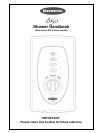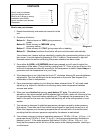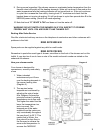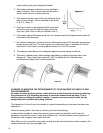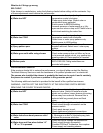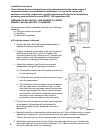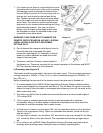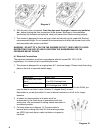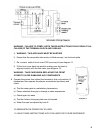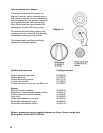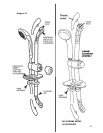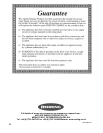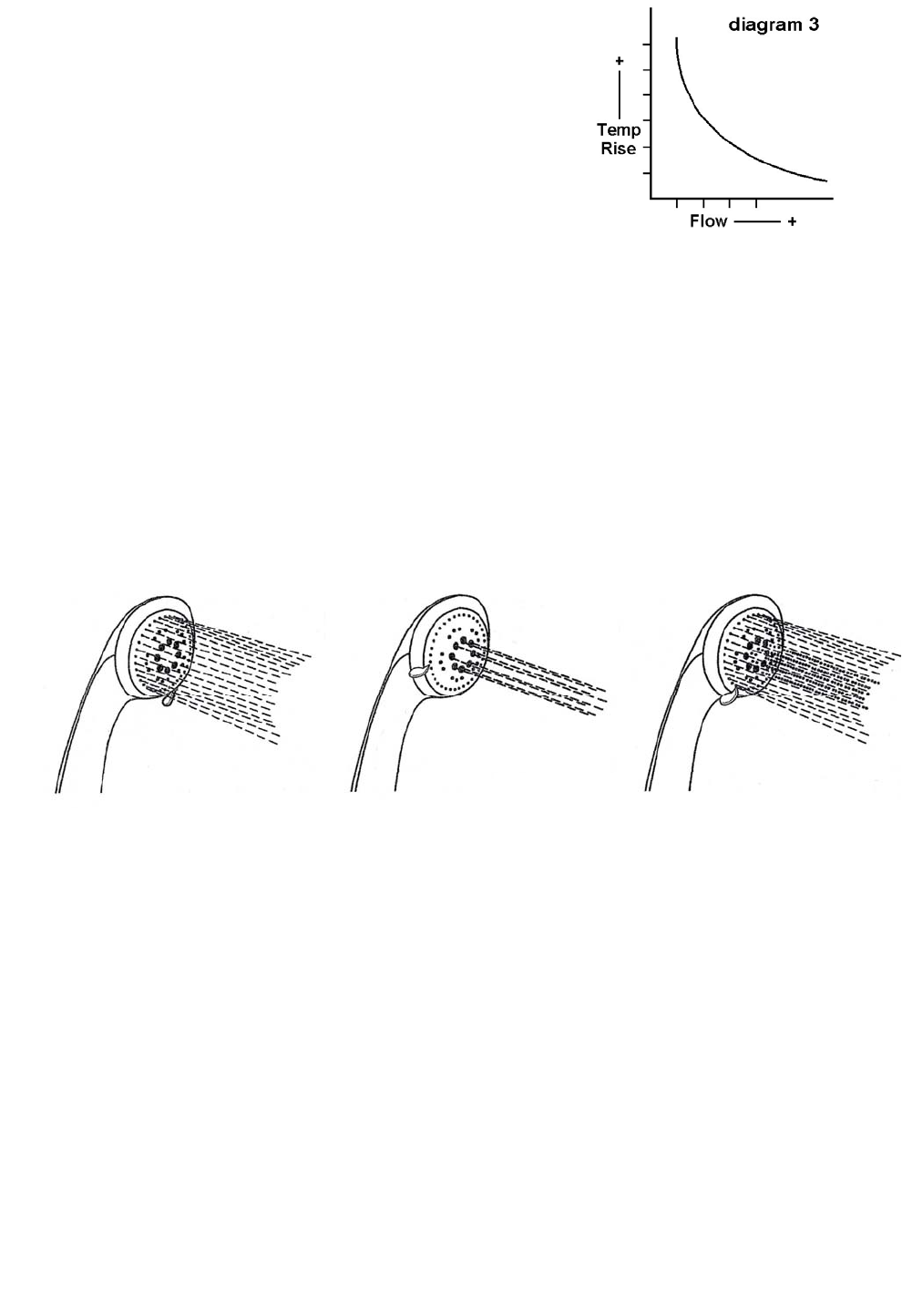
power setting may give adequate hot water.
3. The heaters are only switched on when sufficient
water is flowing. This is done automatically with a
switch, which works on water pressure.
4. The water is turned on and off by the solenoid valve
built into the shower. This is switched on by button
A, B or C. (diag. 2)
5. The flow of water is automatically held at the level
set by the user even though the supply pressure
may vary. (See ‘How to use your shower’ note 7).
6. If the water supply falls below a set limit, the pressure switch will operate and switch off
the power to the elements.
7. As a further safeguard, a thermal cutout switches the power off if the water temperature
climbs above a set limit. The cutout gives an audible click when it switches off, but will
reset itself if cold water is run through the shower for 10 to 20 seconds.
8. The pressure relief device is to safeguard against extreme abuse conditions.
9. There are 3 defined spray plate settings adjustable by rotating the spray plate, (see
diagram 4). The modes have a positive “click” to identify them. If desired many
combinations between the 3 can be achieved.
IN ORDER TO MAINTAIN THE PERFORMANCE OF YOUR SHOWER YOU MUST CLEAN
THE SHOWERHEAD.
All water contains particles of lime, which build up in the showerhead and unit reducing
the performance. It is therefore important to clean the showerhead regularly. This is
simply done by rubbing the rubber nozzles. In severe cases you may need to dip the
spray plate into a suitable de-scaling solution.
The frequency of this will vary from weekly to quarterly depending on the water hardness and
experience.
Check the spray plate is then free to rotate to give the three settings.
In some winter conditions, when the incoming mains water is particularly cold it may be
necessary to select the inner or outer spray pattern only. This will ensure correct operation of
the shower with a slightly lower water flow rate
Note: After use it is normal for some water to drip from the showerhead for a few moments, this
inhibits scale build up over prolonged use.
Diagram 4
4



